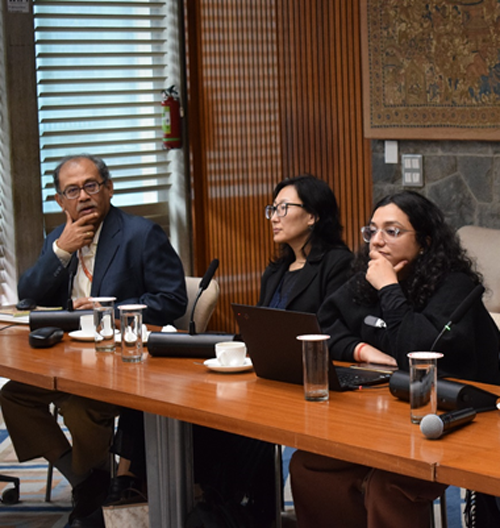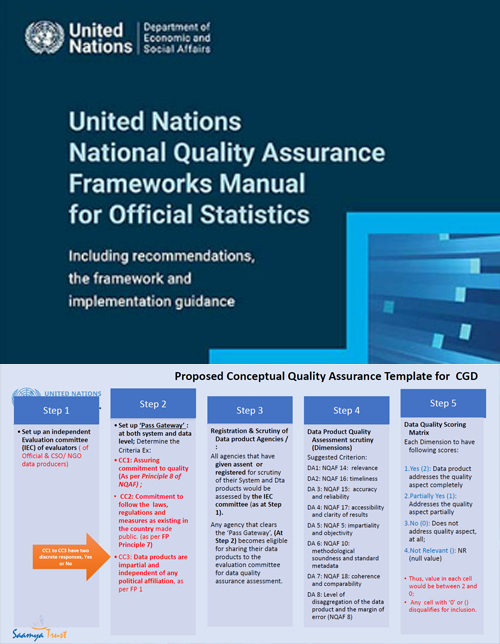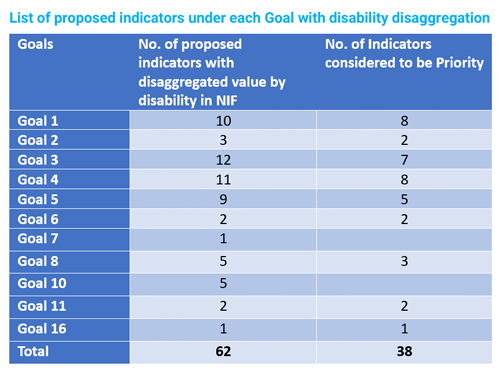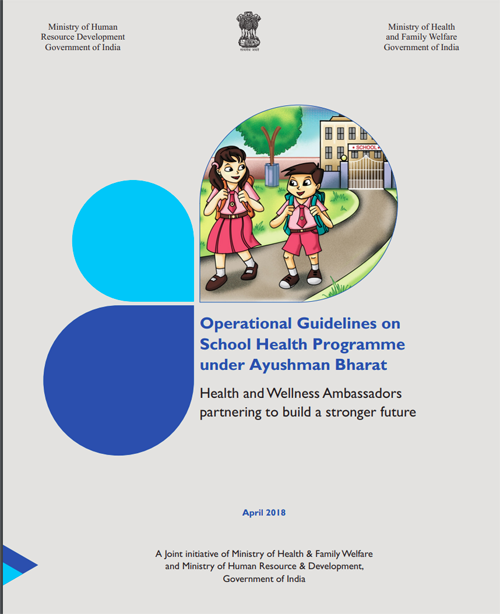Working with
United Nations Resident Coordinators Office, India
Disability Inclusion Marker (DIM) for UN Joint Co-operation Programmes As Part Of The UN Disability Inclusion Strategy (UNDIS) And Capacity Building M&E Specialists Across
To bring a transformative and systematic change in the lives of persons with disabilities from the angle of enjoying human rights as enshrined in Conventions including the Convention on the Rights of Persons with Disabilities (CRPD) and the Sustainable Development Goal (SDG)’s Leave No One Behind (LNOB) commitment led to the development of the UN Disability Inclusion Strategy (UNDIS) and its implementation across the UN system at not just the entity level but also at the country level.
In order to be effectively tracking through an overarching measuring tool, structured Disability Inclusion Markers are defined to supplement UNDIS. It is important that inclusion strategy for persons with disabilities and their mainstreaming into development co-operation activities would help to raise awareness for disability mainstreamed programming dimensions from programme planning to result.
Disability Inclusion Markers like other markers such as Gender Equity Marker (GEM), Human Rights, Youth, etc. is being developed that seeks to score the development programme / intervention to assess whether the programme seeks (1) to uphold the rights of persons with disabilities, (2) to create environment for positive results for persons with disabilities and (3) whether it targets persons with disabilities with specific results / outcome. The scoring pattern is based on a structured scoring system.

Conceptual Framework on Citizen Generated Data (CGD)- An Explorative Attempt for Quality Assurance
Leaving no one behind commitment of the 2030 Global Agenda stipulates monitoring of the progress at the community/local level. Unfortunately, the official data collected through the national statistical system, are not sufficient to assess the progress of Sustainable Development Goals (SDGs) progress, especially for marginalized and vulnerable populations.
The national SDG progress Report 2023 provides a lot of information on all identified 300+ indicators in the NIF but due to lack of disaggregation by social groups, information and evidences about vulnerable populations are missing. The evidence gap is the biggest challenge in the assessment of the situation.
The gap in information is largely due to two main reasons – (1) the official data source does not collect the required information and/or (2) the data source does not enable adequate level of disaggregation.
For official monitoring and official statistics purpose, it is being acknowledged that citizen data can provide and / or supplement valuable information to address many of the social issues and its challenges to inform policies and implementation actions.
CGD is data is generated by engaging with people / citizens for their welfare purposes, contributing to policy reforms. The concept of CGD is evolving. In this paper, we provide an explorative idea on why CGD; how its quality can be assured and finally a detailed structure for Data Quality assurance (DQA)

Strategies Of Bridging Data Gaps in Monitoring Situation of Persons with Disabilities Through the National Indicator Framework (NIF)- India’s SDG Monitoring Framework
The data gap in understanding situations faced by persons with disabilities is a universal phenomenon. UN Convention on the Rights of Persons with Disabilities (UNCRPD) under Articles 4 and 31 mandates all nations that signed the convention, should collect data on persons with disabilities and disaggregate it for granular level. Similarly, the national Act on Rights of Persons with Disabilities (RPD) mandates collection of data and its disaggregation under various sections . The UN Flagship Report, ‘Disability and Development Report’, 2018 mentions that data and statistics compiled and analysed in the ‘2018 report’ indicate that persons with disabilities are not yet sufficiently included in the implementation, monitoring and evaluation of the SDGs.
The latest monitoring report on NIF, 2023 by Govt. of India highlights steps in bridging the data gaps relating to SDG indicators. An institutional mechanism has been put in place. While the 280 + odd indicators in NIF have limited information on persons with Disabilities. Only one indicator (4.5.2) provides indicator value by disability.
This paper underlines global and national commitment for disaggregated data on persons with disabilities, level of disaggregation of data on under each indicator in the NIF, proposed level for Disaggregation by Disability (basis RPWD commitment); and a prioritized list of disaggregation by SDG Goals / targets.

Working with United Nations Population
Implementation Research of School Health and Wellness Program In Selected State , namely, Bihar, Rajasthan
The implementation research study will measure the effectiveness of the strategies and processes adopted for the implementation of SHWP in three selected states. Government of India under Ayushman Bharat initiative launched School Health & Wellness Program (SHWP) in 2019 to promote health and well-being of school going students and leverage schools to improve access to correct and comprehensive information on a range of topics which are necessary for adolescent and Youth. The program is implemented in aspirational districts in the first phase across the country and it is getting scaled up in remaining districts in a phased manner.
Objectives through this research Study, assess (1) the effectiveness of skill building of teachers; (2) the status of transaction of training modules among students (3) the usefulness of the weekly sessions among students conducted by the Health and Wellness Ambassadors and suggestions to improve the quality of these sessions and (4) assess the monitoring systems established including record keeping, reporting monitoring, supervision and feedback and identify gaps and challenges in using these systems. For more on the SHW Programme, refer to:
